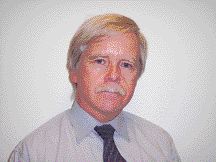Slow times in mining over the past couple of decades have changed into a time of high activity, buoyed by strong demand for commodities. As mining companies contemplate their next projects, they may be ignoring a vital question — who’s going to make all those plans happen?
Today’s staff shortages may only be a hint of things to come, as companies find their hopes for the future choked off by the rising cost of labour and the difficulty of filling some positions at any pay rate.
What’s got us into this position?
One reason for the shortage lies in the very success of the industry. Some of the most skilled executives in junior mining companies cashing in options are opting for retirement. We also see skilled, experienced line employees of Baby Boomer age, also having collected sufficient savings, hanging up their hard hats for the last time.
The low commodity prices of previous decades have also played a role, as fewer young people found opportunities or reasons to enter the industry. The effect of this lack of new people was concealed for a time by the growth in automation technology, which made workforces more efficient and allowed productivity to remain strong, even without hiring many new staff. The same technological boom has made it possible for today’s young people, who might otherwise have made the trek to mining camps in remote areas, to find well-paying work that gives the advantages of city life.
So what’s the answer? Certainly, there’s no magic bullet. Solutions will be varied, and they will take time.
One solution lies in recruiting the right levels of staff for the right kinds of work. In many cases, we find highly skilled people doing work well beneath their skills. This issue came out at the Canadian Association of Mining Equipment and Services for Export’s (CAMESE) Phelps Dodge Conference for Mining Suppliers in Richmond Hill, Ont., in November. A senior Phelps Dodge executive pointed out that in many cases, engineers who should be supervising the work of technicians and technologists are doing the work themselves. There are engineers doing surveying, and geologists doing sampling, both tasks traditionally undertaken by technicians and technologists. This not only increases costs, but means that companies are not getting the full benefit from the professionals’ training. The industry needs to encourage more people to take up careers in skilled trades, such as technologist and technician.
One reason, I believe, why young people don’t get encouraged to take these college-level programs is that teachers, most of whom are university educated themselves, may think that skilled trades are a “second-best” career. In fact, this work can be rewarding and satisfying for a large part of the workforce. This means that the mining sector needs to communicate the advantages of skilled trades to more people, including educators and high school guidance counsellors.
Another success factor will be around recruiting into a mining career, groups that have not necessarily previously considered this option.
First Nations
Already, we are seeing increasing participation by some First Nations people in the resource industries. Golder Associates has supported the establishment and growth of several companies, with strong First Nations ownership, providing services such as environmental monitoring to the resource sector. This began several years ago, when Golder realized that to develop a qualified biologist took many years of study, “biologist’s assistant” work could be done by people with much less education, if given proper training. Working with First Nations people requires a flexibility to work within their cultural environment and worldview.
Women
With the need for physical strength in mining disappearing through automation, it is increasingly practical to move more women into line positions in mining. One of the keys to success is instilling a work environment where women feel welcome and safe from problems such as harassment.
Immigrants
Previous waves of immigrants often migrated directly to mining communities, but today’s immigrants from places such as Pakistan, Nigeria and the Philippines often prefer city life where they can fit into their own cultural groups. Recruiting this labour pool will also require flexibility — possibly providing transportation to major cities for culturally important festivals such as Diwali for Hindus and Eid al-Fitr for Muslims.
Part of the solution may also lie in connecting and implementing effective work teams through technology. For example, at Golder, we recently completed a mine feasibility study by including people in Red Lake, Mississauga and Oakville, in Ontario, co-ordinated by a manager in Sasktatoon, Sask. In many other cases as well, Golder employees in several countries work together, supported by file sharing and other technologies.
Perhaps the biggest success in dealing with staffing issues will come from industry — companies being willing to treat it as a problem that needs both planning and work — just like finding a way to reach an orebody inside a fractured rock mass. With adequate attention, support and innovation, the problems of developing and providing human resources to our over-stretched industry can be overcome.
— Kirk Rodgers is co-ordinator of the North American Ore Evaluation Services Group of Golder Associates, based in Toronto and Mississauga. He can be reached at 905-567-4444 or kirk_rodgers@golder.com.


Be the first to comment on "The looming staff crunch for mining companies"